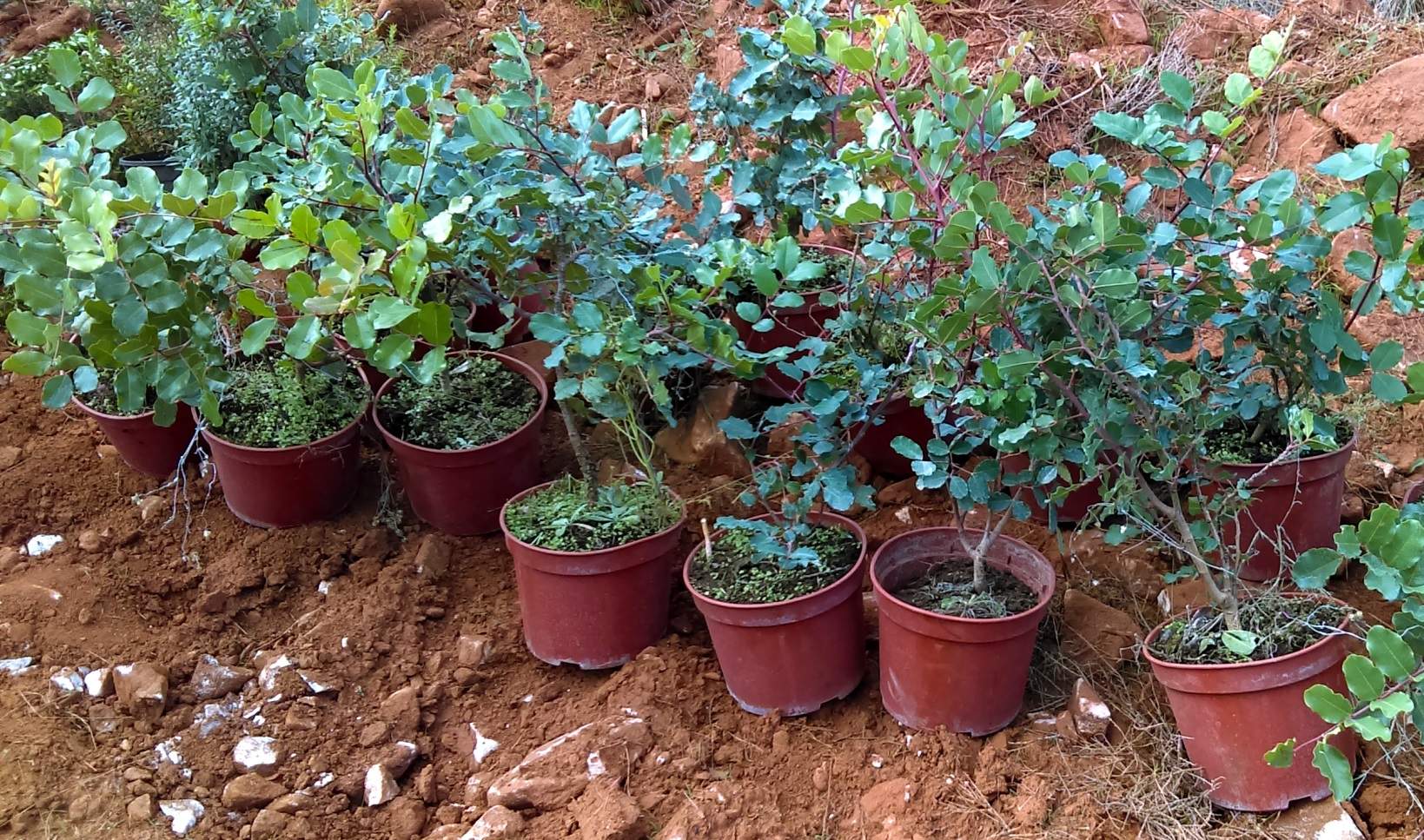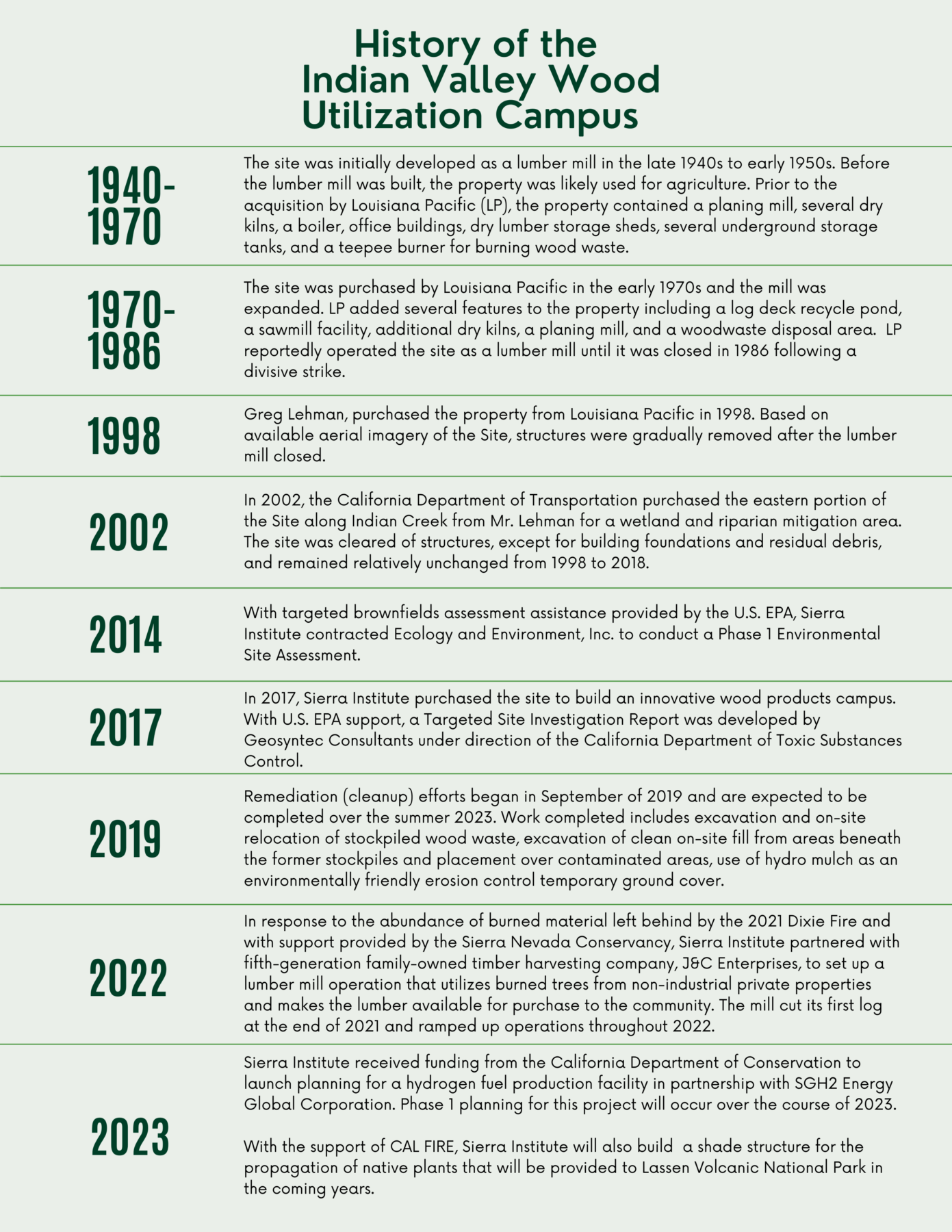Public Comment Annoucment
Sierra Institute seeks public comment on the Crescent Mills Removal Action Workplan (RAW) Addendum prior to resuming remediation in summer/fall 2023.
Original RAW Documents (August 2019):
- Report
- Figures
- Tables
- Appendices
- A: Targeted Site Investigation (see below for full report)
- B: Southern Area Site Characterization Report
- C: On-Site Fill Investigation
- D: Screening Level Human Health Risk Assessment
- E: Ecological Scoping Assessment
- F: Dust Control and Decontamination Plan
- G: Soil Management Plan
- H: Site Safety Plan and Hospital Map
- I: Community Profile
- J: Administrative Record List and Sacred Lands File Search
- K: Grading Plan PAGE 1 and PAGE 2
Reports:
- Targeted Site Investigation Report (April 2017)
- TSI Appendices
- TSI Figures
- TSI Tables
- Phase I Environmental Site Assessment Updated for TSI
- Phase I Environmental Site Assessment (July 2014)
- Final Targeted Brownfields Assessment Report (November 2014)
An Innovative Wood Products Campus
To respond to declining forest health, high risk of catastrophic wildfire, and poor socioeconomic conditions in a community that has historically had a strong presence in the timber industry, Sierra Institute has repurposed an old sawmill site for an innovative wood products campus in Crescent Mills. The Indian Valley Wood Utilization Campus is facilitating economic and sustainable forest management by investing in multiple forms of innovative technology capable of paying for forest restoration work with high-value products and California climate incentives. The campus will consist of a variety of businesses that generate high-value products from low-value woody biomass.
Sufficient processing infrastructure and a strengthened market for forest biomass will allow for increased pace and scale of forest restoration activities in Plumas County and the Upper Feather River Watershed. At full build-out, this campus will generate 30-50 well paying industry jobs for local residents.

Facilities

Wood Chip Storage
Following rural brownfield remediation efforts, the first wood utilization project at the campus was the construction of a wood chip sorting and storage facility in 2020. This facility currently processes chips from local forest restoration and wildland urban interface (WUI) fuels reduction projects. The chips are kept in a storage shed that maintains their dryness for optimal use in the biomass boiler (pictured) which provides heat and energy to the Health and Human Services building in Quincy, California. The ability to utilize this material reduces the number of pile burns that occur in the forest, improving air quality for Plumas County and California residents.

Sawmill
In the wake of the 2021 Dixie Fire and its impact within the Indian Valley community, the Sierra Institute teamed up with a local, family-run logging company, J&C Enterprises, to develop a community-scale sawmill to address the entwined needs of wildfire disaster recovery - rebuilding homes and communities, and restoring forest health. The sawmill cut its first log in late 2021, and had an official ribbon cutting on May 18th, 2022 . It is the result of local talent, ingenuity, and engineering piecing together equipment from across the United States and internationally amidst ongoing supply chain disruptions.

Firewood Production
With the majority of Plumas County residents relying on wood stoves for their primary source of heat, there is a considerable retail firewood market locally. J&C Enterprises sells split firewood to the local community, derived from leftover material from the Crescent Mills sawmill, and also from otherwise non-merchantable material from logging operations, such a tree tops and small diameter logs.

Native Plant Propagation
Infrastructure to propagate native plants is being integrated into the wood products campus to advance forest restoration work. With support from CAL FIRE Workforce and Business Development program Sierra Institute will construct a shade house to grow native plants for restoration work at Lassen Volcanic National Park. The structure will be built with wood from the operating sawmill and will be a launch point for increasing plant propagation capacity.

Hydrogen Fuel Production
Sierra Institute is partnering with clean energy company SGH2 Energy Global Corporation to build a Solena Plasma Enhanced Gasifier (SPEG) facility. The facility will consume forest restoration byproducts and produce carbon-negative liquid hydrogen fuel at a commercial scale. California Department of Conservation funding will enable phase 1 planning over the course of 2023. Work includes engineering, design, and layout for the facility, and securing long-term feedstock supply and offtake agreements for hydrogen fuel and storing captured carbon.

